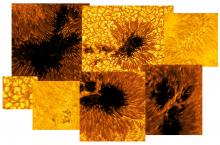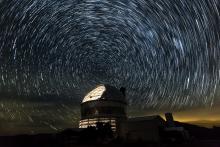Listen to today's episode of StarDate on the web the same day it airs in high-quality streaming audio without any extra ads or announcements. Choose a $8 one-month pass, or listen every day for a year for just $30.
You are here
New Tools
A telescope under construction in Chile will snap huge pictures of the sky — at least 15 terabytes of data every night. There’s no way for people to tease out all of the goodies those pictures will contain: exploding stars, exoplanets, asteroids, and many other objects.
Instead, much of the analysis will be done by computers. They’ll not only generate the images, they’ll alert astronomers to any interesting objects the pictures contain. That will allow astronomers to make more detailed follow-up observations with other telescopes.
Like other areas of science, along with business and other fields, astronomy is experiencing a data glut. Space-based and ground-based telescopes are generating huge amounts of zeroes and ones. And some projects can go on for years. When you add in the observations that have already been recorded, there’s an amazing amount of information.
So astronomers are using new computer techniques to sort through it all. One example is machine learning. The computer is fed examples of the kinds of things astronomers are looking for, and it sifts through the data to find more. Human operators confirm the correct finds and toss out the bad ones. The computer learns from those corrections. So the more data it sorts through, the better it does its job.
Among other projects, astronomers have used these techniques to classify stars and to search for exoplanets — helping them learn about the universe one terabyte at a time.
Script by Damond Benningfield






